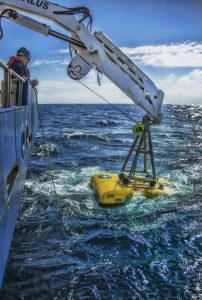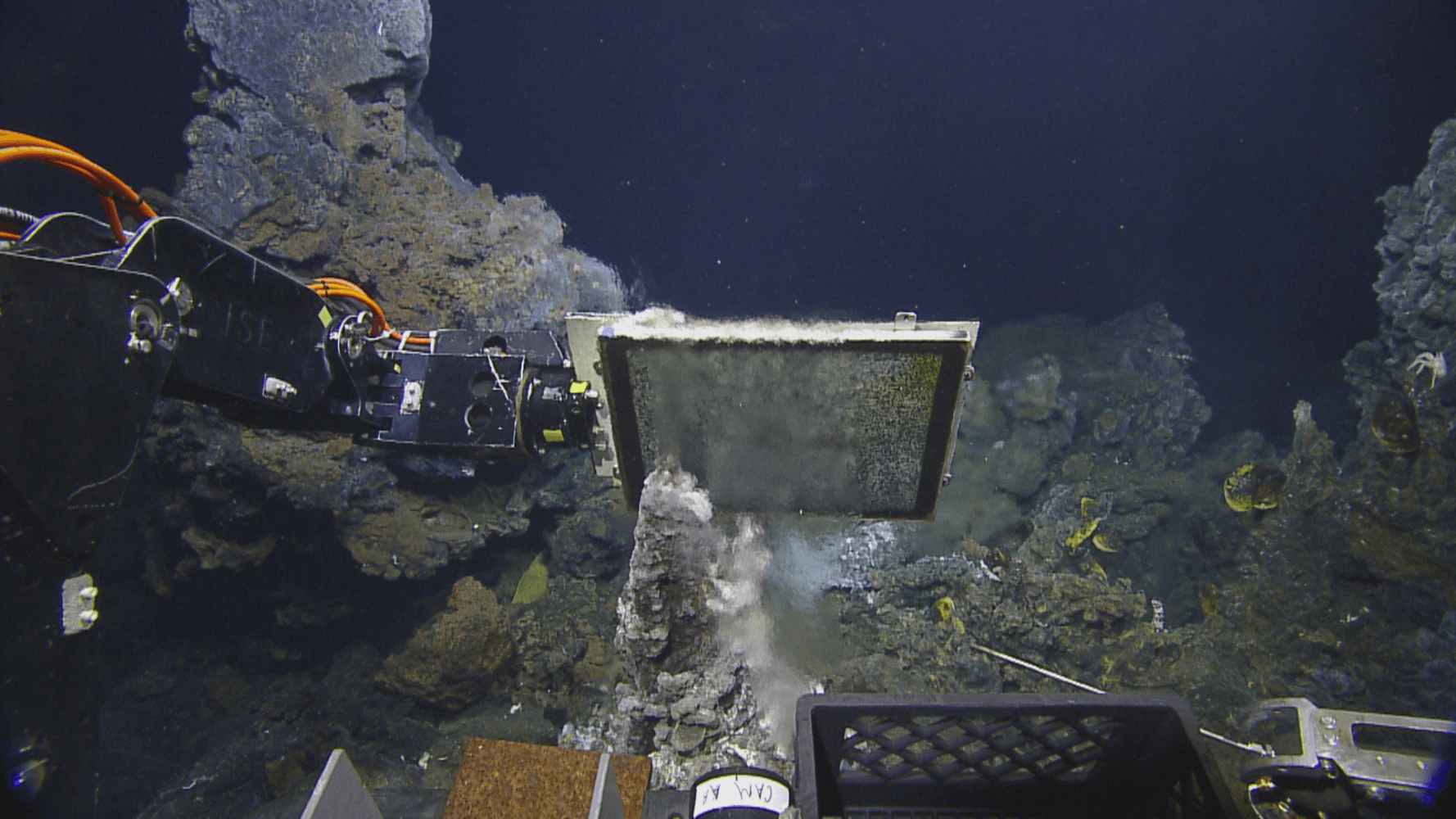Photos courtesy of Julye Newman
URI professor makes new discoveries in hydrothermal vents
Imagine being underwater in the dark, deep sea with pressures so strong our 206 bones would be crushed. While humans haven’t adapted to surviving in the deep ocean, other animals’ vision has evolved to see and some are even able to create their own source of light, bioluminescence.
“We were driven by pure exploration to learn more about this area in the ocean,” Brennan Phillips said, a professor and researcher in ocean engineering at the University of Rhode Island’s Bay Campus.
Surprisingly, humanity has only explored under five percent of the ocean, according to the National Oceanic and Atmospheric Administration (NOAA). What else might be out there? Driven by curiosity, URI’s ocean research team extensively planned their expedition to the Galapagos Islands and hopped aboard the Titanic discoverer’s, Robert Ballard, boat in pursuit of exploration. The team consisted of a chief scientist, a geologist, an expedition leader, researchers and graduate students.
“In order to work in the Galapagos at that scale you have to collaborate with someone there,” Phillips said.
Coordinating efforts to meet objectives of all groups involved is key. Projects this vast rely upon collaboration with local community members. This entailed working with the local Charles Darwin Research Station and the government of Ecuador.
“We have the ability to produce high resolution maps of the seafloor,” Phillips said .
Through producing underwater maps, the team was able to convince the government of Ecuador how worthwhile the exploration was. Furthermore, they met the Darwin Research Station’s goal of expanding the park and protecting the marine species that inhabit this region. That was the golden ticket the team needed to pursue exploration and reveal a piece of the ocean human eyes have yet to discover.
“Hydrothermal vents are known for finding interesting biology…each vent area appears to have its own ecology, its own subset of animals,” Phillips said.
You might be wondering how organisms may even survive in this type of environment; without sunlight, photosynthesis may not occur to produce nutrients. These hydrothermal vents are chemosynthetic, meaning they’re able to produce nutrients from various chemicals (i.e. sulfur, methane, iron). Bacteria may live off of these nutrients, thus allowing larger organisms to feed off of them. Impressively, the team discovered skate eggs within proximity of the hydrothermal vents.
“We started to notice these egg cases…sharks are considered ancient species and have survived for 500 million years,” said Dr. Phillips.
Even when mass extinctions have occurred, sharks persisted and survived. It’s possible they have chosen these environments because they are stable and unaffected by seasonal changes. Overall, the skates are scavenging nutrients and found a way to increase their offspring’s incubation time by trusting their eggs next to hydrothermal vents. Additional marine animals seem to prefer these unique environments.
“There are whales that seem to hang out by underwater volcanoes, why?” Phillips said.
Part of the research entails discovering new questions that lead to further exploration. Perhaps future expeditions may shed more light upon why certain animals gravitate around hydrothermal vents and underwater volcanoes.
The ocean covers 70 percent of Earth’s surface, influencing our weather, transport, fisheries and the survival of animals through oxygen production. Further exploration in waters we have yet to investigate may lead to novel discoveries.
“The ocean is regarded as a sort of bargain basement, but I don’t agree with that estimate,” Jacques Cousteau, a French ocean explorer, researcher and photographer, said. “People don’t realize that water in the liquid state is very rare in the universe. Away from earth it is usually a gas. This moisture is a blessed treasure, and it is our basic duty, if we don’t want to commit suicide, to preserve it.”







